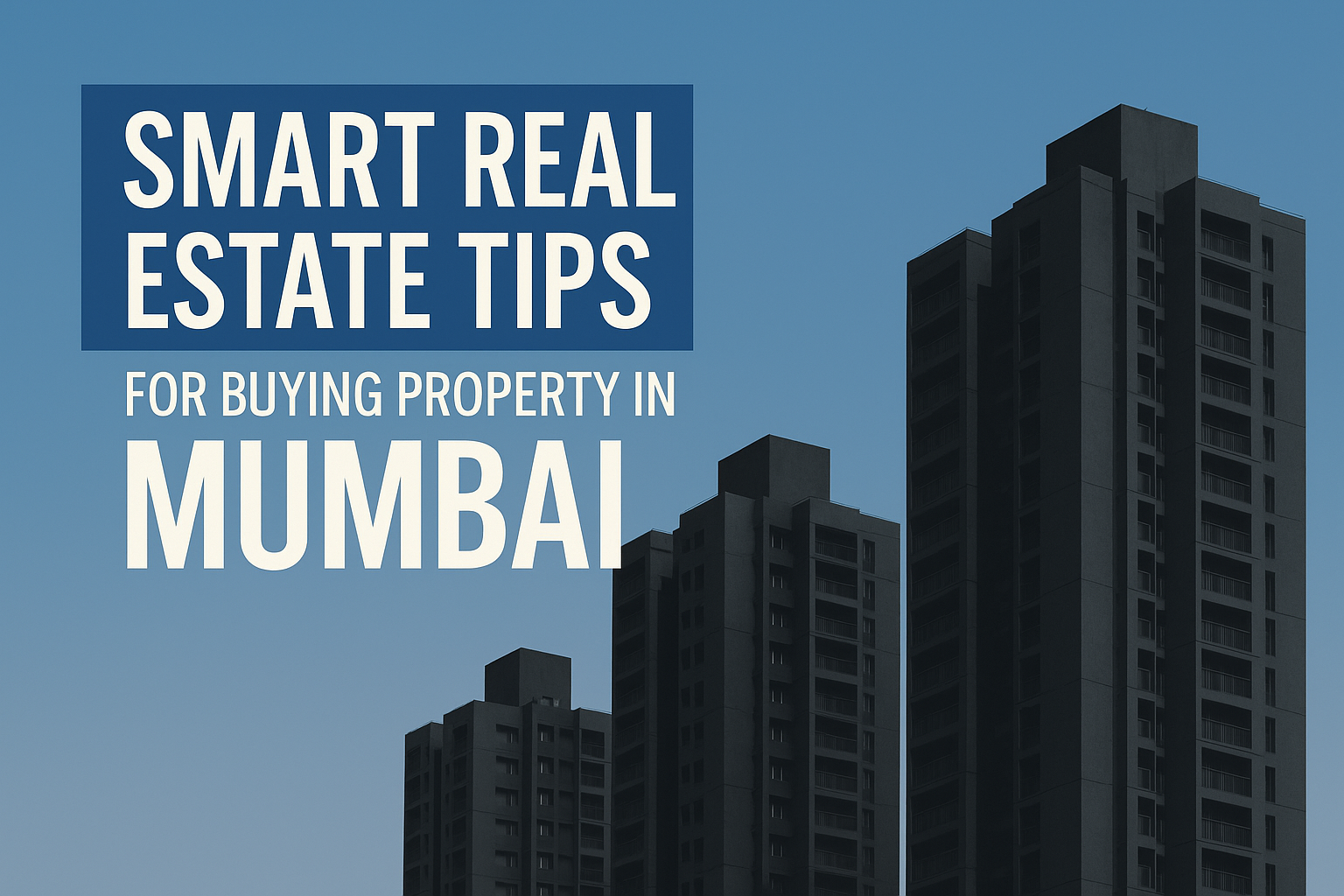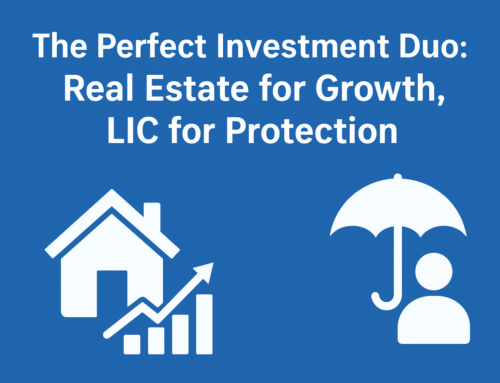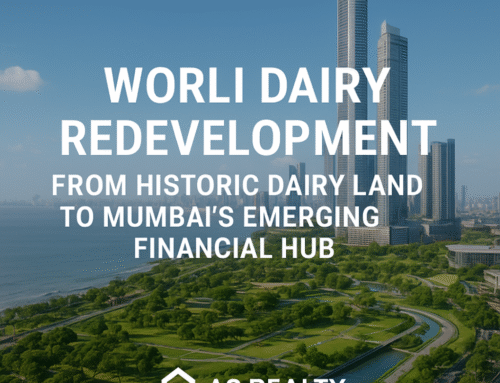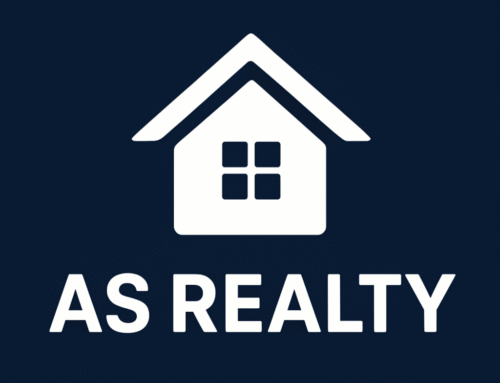Mumbai is a city of sharp contrasts—luxury and affordability, congestion and connectivity, tradition and innovation. When it comes to real estate, these contrasts translate into both risk and opportunity. Whether you’re an aspiring homeowner or an investor seeking long-term gains, understanding the city’s unique property landscape is crucial.
Here are some smart, experience-driven real estate tips to help you make an informed and confident property purchase in Mumbai in 2025.
1. Begin with the End in Mind
Before scanning listings or visiting sites, ask yourself:
-
Is this a forever home or a stepping stone?
-
Do you plan to live, rent, or sell it eventually?
-
Are you buying solo or with family involvement?
This clarity helps define your ideal size, budget, location, and even developer type. For instance, if you’re a single working professional or newlywed couple looking for smart starter homes, something like Sheth Younique in Sion could be a perfect urban match.
2. Don’t Just Buy a Flat, Buy the Neighbourhood
People often focus on carpet area and amenities—but your lifestyle is also shaped by the neighbourhood. Look into:
-
Daily commute time
-
Safety at night
-
Cleanliness and civic infrastructure
-
Availability of daily essentials
A project like Sunteck World in Naigaon stands out because it’s not just about towers—it’s about a planned, gated neighbourhood with integrated shopping, healthcare, and open space.
3. Mid-City Projects Offer the Best of Both Worlds
For buyers who want a mix of connectivity and modern living without South Mumbai prices, mid-city projects are the answer.
Chandak Chembur in the Eastern suburbs offers proximity to highways, monorail, and metro connectivity while still being in a calm, residential pocket. It’s a sweet spot for families and working professionals alike.
4. Reassess Your Need for a Deck or Balcony
Mumbai’s weather and urban density often make a deck or balcony feel like a luxury. But for many, it’s non-negotiable—especially post-COVID, where fresh air and light have become priorities.
Projects like Spenta Legasea in Matunga offer full balconies with sea views—ideal for those who want open skies in the middle of the city.
5. Evaluate Micro-Markets, Not Just Macro-Areas
Borivali, for example, has many sub-pockets—some well-developed, others still catching up. One road can make a huge difference in pricing, crowding, and accessibility.
In the same way, Wadala East and West differ sharply. Dosti Eastern Bay is in a more upscale eastern pocket with cleaner roads, better views, and high-end demographics.
6. Research Past Projects of the Developer
Before committing, visit one or two previously delivered projects from the same builder. Check for:
-
Construction quality
-
Maintenance standards
-
Society culture
-
Resale trends
Take Raheja Imperia, for example. Raheja Universal has a legacy of delivering luxury homes in prime locations—and Imperia in Worli is no exception.
7. Think of Real Estate as a Long Game
Property in Mumbai rarely offers quick flips. The real gains happen over 5–10 years. Choose locations where infrastructure is being built or gentrification is occurring.
A great example is Ajmera Island in Wadala, where proximity to the upcoming Mumbai Trans-Harbour Link and business districts makes it an investor’s delight.
8. New Infrastructure = Future Appreciation
Keep an eye on:
-
Metro Line 2 & 4
-
Mumbai Coastal Road
-
Bullet train corridor
-
Eastern Freeway extensions
Kanakia Silicon Valley in Powai, surrounded by IT parks and Metro upgrades, is a textbook case of how infrastructure drives appreciation.
9. Ask for the Possession Timeline—And Buffer It Mentally
If a builder promises delivery in 24 months, mentally calculate 30. Add delays for OC, registration, and final handover. This will help you plan rentals, EMIs, and moves better.
Near-possession homes like Raunak Centrum in Sion are great for buyers who don’t want to wait years but still want new construction.
10. Trust Your Senses During Site Visits
No matter how good the brochure looks—nothing beats standing on the site and soaking in the feel of the space.
Whether it’s Micla Aradhya in Miraroad or JP North Garden in Mira Road, a physical visit gives you insight into actual space, sound, traffic, light, and surroundings.
11. Not All Amenities Are Equal
Look beyond the list. A gym in the basement isn’t the same as a sky lounge. A 3,000 sq. ft. pool for 600 families is very different from one for 200.
Neelam Solstice in Ghatkopar East gets this balance right with a limited number of families and well-planned recreational spaces.
12. Don’t Skip the Legal Paperwork Check
Ask for:
-
RERA certificate
-
Title clearance certificate
-
Development agreement
-
Approved floor plan
Builders like Sheth Beaumonte in Sion provide all documentation transparently—a must-have in Mumbai’s legally complex market.
13. Think Beyond Carpet Area
A flat with 700 sq. ft. carpet but smart design, light, and cross ventilation can feel more livable than an 850 sq. ft. space with poor layout.
71 Midtown showcases this brilliantly with functional layouts and intelligent use of natural light.
14. Don’t Dismiss Distant Suburbs
Today’s distant suburb is tomorrow’s metro-connected hub. Consider long-term savings in both EMI and lifestyle by going a bit further now.
Mayfair Virar and Mayfair Virar Gardens offer quality homes under ₹60L with growing infrastructure, perfect for budget-conscious families.
15. Evaluate Builder’s NRI-Friendliness
If you’re an NRI, look for:
-
Digital paperwork handling
-
Dedicated NRI helplines
-
POA-based transactions
Builders like Suraksha Smart City cater to this growing demographic with ease of access and remote booking support.
16. Loan Pre-Approval Can Make You Negotiation-Ready
Getting a home loan pre-approval from your bank helps you lock interest rates and shows sellers you’re serious—sometimes leading to discounts or better deals.
If you’re buying on your own, female buyer benefits like lower stamp duty (1% off) and bank offers can further ease your purchase.
17. Project Scale Affects Maintenance and Living Experience
High-density projects often suffer from overused amenities and maintenance overload. Look at project size versus the number of units.
A project like Sanghvi Ecocity in Borivali East balances open space with limited density—ideal for peaceful living.
18. Go with a Trusted Real Estate Advisor
Mumbai’s property market is not DIY-friendly. There are too many variables—legal, financial, regulatory, and emotional.
A reliable advisor like AS Realty can save you time, prevent costly mistakes, and give you access to pre-vetted projects. Their Google Business Profile reflects a solid reputation with buyers across Mumbai and beyond.
Final Thoughts
Mumbai real estate is complex—but it’s also incredibly rewarding when done right. With the right mindset, guidance, and research, your next property won’t just be a roof over your head—it could be the smartest investment of your life.
So whether it’s a high-rise in Sion, a garden township in Dombivli, or a sea-facing luxury home in Worli, take your time, trust the process, and choose smartly.







Leave A Comment